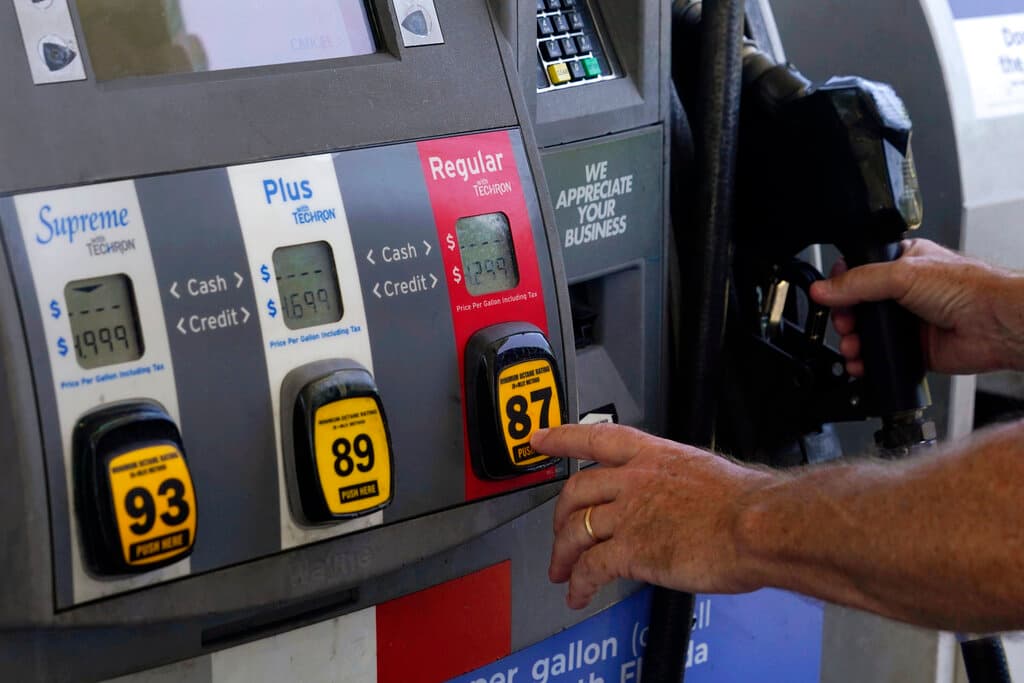Prices Jumped 8.3 Percent in April, as Biden Calls Inflation His ‘Top Domestic Priority’
Compared with a year ago, grocery prices have shot up 10.8 percent, the largest such increase since 1980.

WASHINGTON — Consumer prices jumped 8.3 percent in April over last year, the Labor Department said Wednesday in a report containing cautionary signs that inflation was becoming more entrenched. The report came a day after President Biden called inflation his “top domestic priority.”
April’s price increase was below the 8.5 percent year-over-year surge in March, which was the highest rate since 1981.
On a month-to-month basis, prices rose 0.3 percent from March to April, a still-elevated rate but the smallest increase in eight months.
Yet Wednesday’s data featured warning signs of persistent inflation. Excluding the volatile food and energy categories, so-called core prices jumped 0.6 percent from March to April — twice the 0.3 percent rise from February to March. Those increases were fueled by spiking prices for airline tickets, hotel rooms and new cars. Apartment rental costs also continued to rise steadily.
The sharp price gains from March to April “make clear that there is still a long way to go before inflation returns to more acceptable levels,” said an economist at asset manager AB, Eric Winograd.
Over the past year, grocery prices have shot up 10.8 percent, the largest such year-over-year increase since 1980. The cost of a gallon of gas fell 6.1% in April but is still up nearly 44% from a year ago.
And so far in May, prices at the gas pump have shot back up. Nationally, the average for a gallon of gas is at a record $4.40, according to AAA, though that figure isn’t adjusted for inflation.
The high price of oil is the main factor. A barrel of U.S. benchmark crude sold for around $100 a barrel Tuesday. Gas had fallen to about $4.10 a gallon in April, after reaching $4.32 in March.
Beyond the financial strain for households, inflation is posing a serious political problem for President Biden and congressional Democrats in the midterm election season, with Republicans arguing that Mr. Biden’s $1.9 trillion financial support package last March overheated the economy by flooding it with stimulus checks, enhanced unemployment aid and child tax credit payments.
On Tuesday, Mr. Biden sought to take the initiative and declared inflation “the No. 1 problem facing families today.”
Mr. Biden blamed chronic supply chain snarls related to the swift economic rebound from the pandemic, as well as Russia’s invasion of Ukraine, for igniting inflation. He said his administration will help ease price increases by shrinking the government’s budget deficit and by fostering competition in industries, like meatpacking, that are dominated by a few industry giants.
Still, new disruptions overseas or other unforeseen problems could always send American inflation back up to new highs. If the European Union decides, for example, to cut off Russian oil, gas prices in the United States would likely accelerate. China’s Covid lockdowns are worsening supply problems and hurting growth in the world’s second-biggest economy.
Previous signs that American inflation might be peaking didn’t last. Price increases decelerated last August and September, suggesting at the time that higher inflation might be temporary, as many economists — and officials at the Federal Reserve — had suggested. Yet prices shot up again in October, prompting the Federal Reserve’s chairman, Jerome Powell, to start shifting policy toward higher rates.
This time, though, several factors are pointing to an inflation peak. Natural gas prices, which soared in March after Russia’s invasion of Ukraine, fell on average in April. Automakers’ supply chains have unraveled a bit, and new car sales have risen.
While food and energy have endured some of the worst price spikes of the past year, analysts often monitor the core figure to get a sense of underlying inflation. Core inflation also typically rises more slowly than the overall price increases and can take longer to decline. Rents, for example, are rising at a historically fast pace, and there is little sign of that trend reversing anytime soon.
The unexpected persistence of high inflation has caused the Fed to embark on what may become its fastest series of interest rate increases in 33 years. Last week, the Fed raised its benchmark short-term rate by a half-point, its steepest increase in two decades. And Mr. Powell signaled that more such sharp rate hikes are coming.
The Powell Fed is seeking to pull off the notoriously difficult — and risky — task of cooling the economy enough to slow inflation without causing a recession. Economists say such an outcome is possible but unlikely with inflation this high.
In the meantime, by some measures Americans’ wages are rising at the fastest pace in 20 years. Their higher pay enables more people to at least partly keep up with higher prices. But employers typically respond by charging customers more to cover their higher labor costs, which, in turn, heightens inflationary pressures.
Last Friday’s jobs report for April included data on hourly pay that suggested that wage gains were slowing, which, if it continues, could help ease inflation this year.
